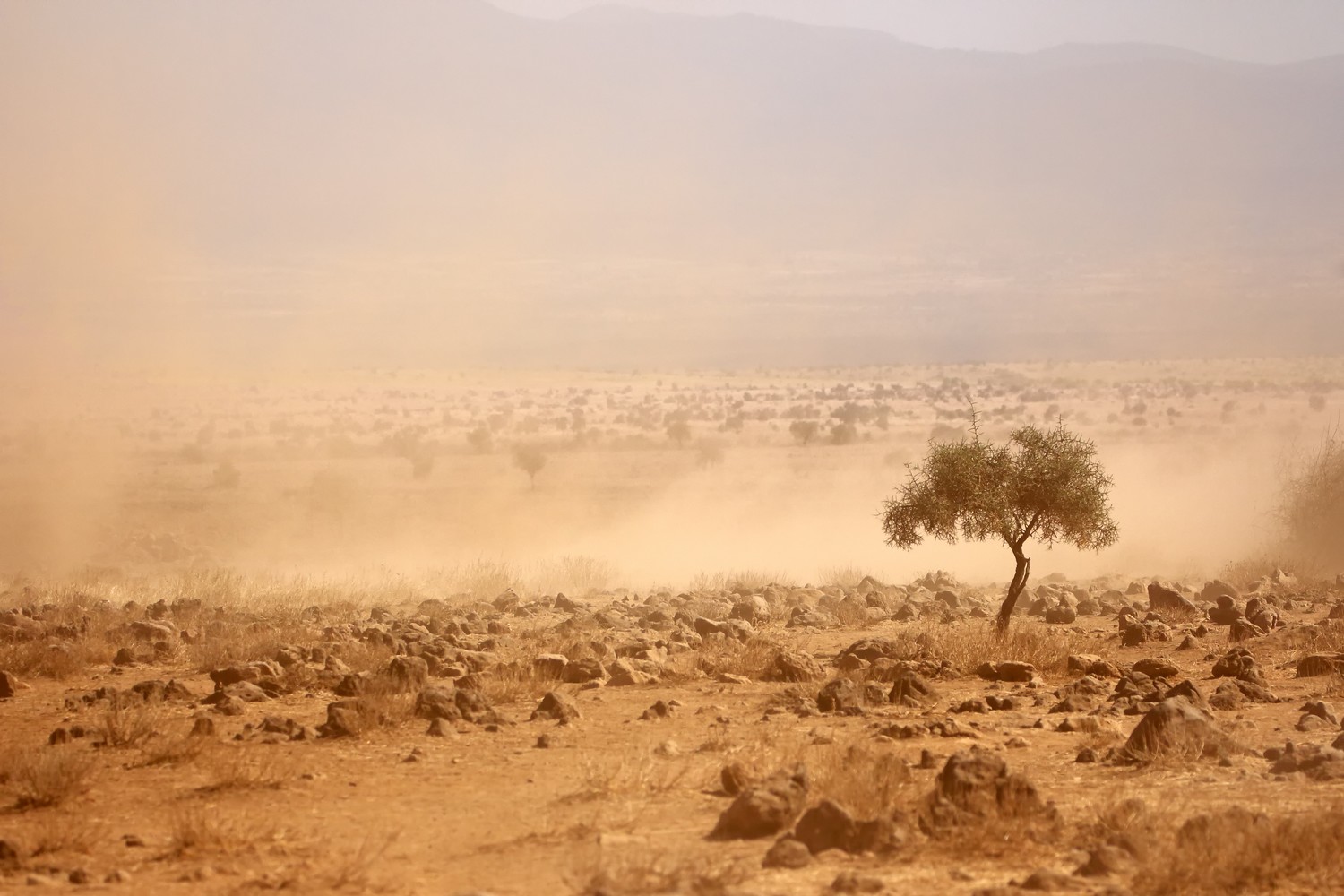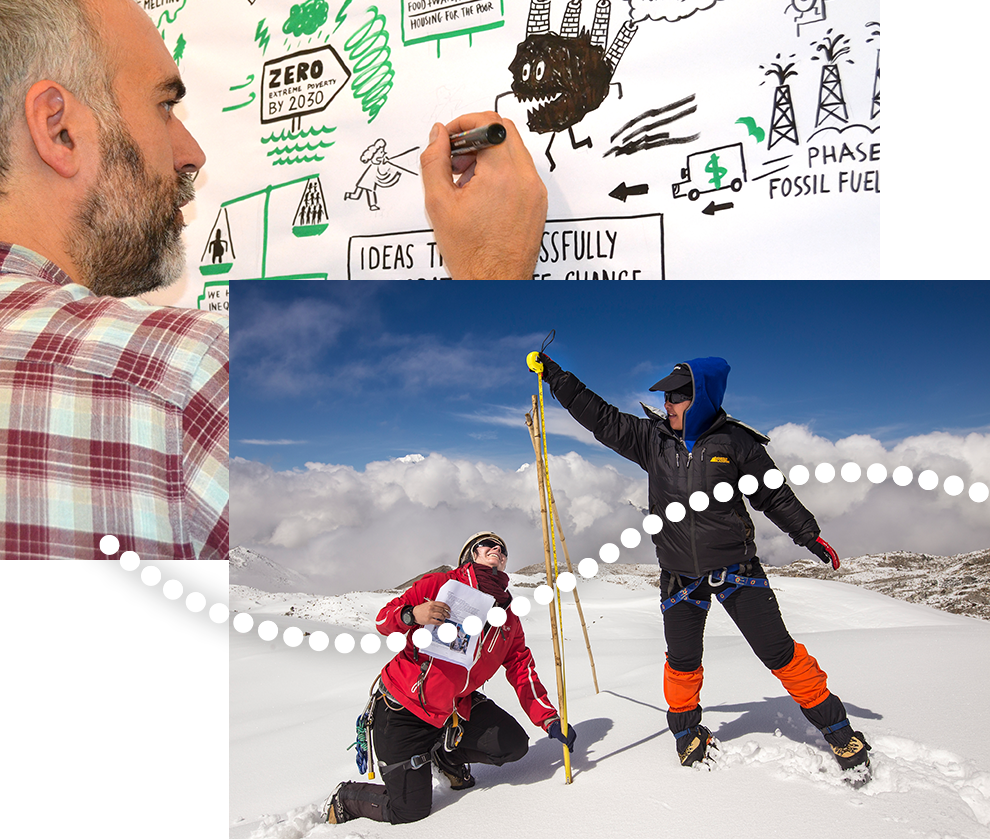Alignment to Advance Climate-Resilient Development: Kenya Case Study

Introduction
Kenya adopted the 2030 Agenda for Sustainable Development and Sendai Framework for Disaster Risk Reduction in 2015 and ratified the Paris Agreement in 2016. A concerted effort has been made within the National Adaptation Plan (NAP) process to align these policy processes to help advance climate-resilient development.
The Kenya National Adaptation Plan, 2015–2030 promotes sustainable development and enhances the resilience of vulnerable populations to climate shocks through adaptation and disaster risk management strategies. This identification of synergies with disaster risk reduction and the Sustainable Development Goals (SDGs) policy processes has been driven by the recognition that climate change is a threat to national sustainable development in Kenya, and disaster risk management is a top priority in climate change programming.
This case study explores how the NAP process at the national level in Kenya converges with the SDGs and disaster risk reduction agendas. It explores the alignment between Kenya’s NAP and NDC; the NAP linkages with the SDGs and disaster risk reduction planning and programs; and the alignment in national planning processes. The brief then discusses opportunities to improve alignment, looking at possible next steps and the benefits of alignment; and concludes with lessons to inform next steps.
*Download the full case study from the right-hand column. A short overview of the publication is provided below. A full version in French and Spanish is also available on the NAP Global Network website.
Synergies and Linkages Among the Policy Processes in Kenya
The Government of Kenya is taking systematic steps toward a comprehensive approach to climate adaptation, disaster risk management and the SDGs, discussed below:
Strategic alignment between the three policy processes is encouraged in the Climate Change Policy, 2018 and the Climate Change Act, 2016.The National Climate Change Policy (2018) has an objective of “reducing vulnerability to the impacts of climate change by building adaptive capacity, enhancing climate change resilience and strengthening capacities for disaster risk reduction.”
Policy alignment is evident in Kenya’s NCCAP 2018–2022, which was developed to purposefully align with the SDGs and disaster risk reduction programs, demonstrating systemic alignment through a shared vision for climate-resilient development.NCCAP 2018–2022 identifies disaster risk management as one of seven climate change priority action areas that are expected to promote climate-resilient development and deliver on the long-term goals of the NAP 2015–2030. The seven priority areas in the document indicate how action will contribute to the achievement of the SDGs and include appropriate SDG indicators to help measure progress on adaptation and SDGs at the national level.
NCCAP 2018–2022 is the five-year implementation plan for the NAP and NDC, and the two processes demonstrate systemic alignment.The NAP is the basis of the adaptation priorities in Kenya’s NDC, which establishes adaptation as Kenya’s priority response to climate change and sets a goal of mainstreaming adaptation actions into the five-year development plans of Kenya Vision 2030.
Integrated climate risk management is promoted as a central part of disaster risk and drought management policy and planning, demonstrating strategic alignment with the climate adaptation agenda.The National Disaster Risk Management Policy notes the need to enhance resilience to the impacts of disaster risk and climate, and the National Disaster Risk Management Strategy aims to strengthen government coordination for climate resilience and disaster risk management, including strengthening institutional, planning and policy frameworks.
Kenya’s approach to climate finance demonstrates informal alignment between the climate adaptation, disaster risk reduction and SDG processes.The Disaster Risk Financing Strategy 2018 aims to strengthen institutional, technical and financial capacity to manage the impacts of climate and disaster risks while building financial capacity to advance climate adaptation and respond to the impacts of natural hazards.
Kenya’s commitment to the three international policy processes is reflected in national planning documents, including the Third Medium Term Plan, 2018–2022 of Vision 2030, Kenya’s long-term economic development blueprint.Climate change, disaster risk reduction and the SDGs have been mainstreamed in the Third Medium Term Plan. The plan, for the first time, takes an integrated approach to addressing climate change and disaster risk impacts, and identifies climate change as a threat to Kenya’s sustainable development.
Entry Points and Opportunities for Enhanced Alignment
Much of the alignment of the Paris Agreement, Sendai Framework for Disaster Risk Reduction and 2030 Agenda for Sustainable Development in Kenya is through the identification of synergies in key policy and strategy documents. Four areas that present opportunity for enhanced alignment, potential next steps and the benefits of alignment are discussed below.
- Coordination Mechanisms. Effective coordination of the three policy processes could build on existing structures.
- Climate Risk Information Sharing. Access to climate and disaster risk information is critical for implementation. Effective drought management, disaster management and climate change adaptation activities require accurate and timely climate risk information along with analysis of this data.
- Harmonized Financing Strategies. The National Treasury and Planning department has taken steps to improve the efficiency and effectiveness of financing for disaster risk management and climate change that includes operationalization of the Climate Change Fund.
- Coordinated Monitoring and Evaluation Systems. Monitoring and evaluation of climate change, disaster risk management and the relevant SDGs could be undertaken in a coordinated manner, bringing together the various actors that have responsibility for reporting on the three processes.
Lessons Learnt
Key Messages
- The Government of Kenya has taken significant action to align efforts under the Paris Agreement, Sendai Framework for Disaster Risk Reduction and 2030 Agenda for Sustainable Development. This alignment is driven by the recognition that climate change is a threat to national sustainable development in Kenya, and disaster risk management is a top priority in climate change programming.
- Kenya’s national adaptation plan (NAP) 2015–2030 and nationally determined contribution (NDC) are implemented through the National Climate Change Action Plan, 2018–2022 (NCCAP). The action plan purposefully aligns with the SDGs and disaster risk reduction agendas, demonstrating systemic alignment through a shared vision for climate-resilient development. The NAP and NDC demonstrate systemic alignment because the NAP is the basis for the adaptation information in the NDC.
- Much of the adaptation, disaster risk management and SDGs alignment is through the identification of synergies in key policy and strategy documents. Opportunities exist to enhance this alignment through improved coordination mechanisms, climate risk information sharing, harmonized financing strategies, and coordinated monitoring and evaluation systems.
- The Kenyan experience provides lessons for alignment of the three policy processes, including that NDC implementation plans offer an opportunity to create synergies; multistakeholder adaptation processes offer a starting point for coordination and harmonization; and common reporting using SDG indicators can link the three policy processes.
Conclusion
The Kenyan experience provides lessons for alignment of the three policy processes through the NAP process, as discussed below.
- NAP and NDC implementation plans offer opportunity to create synergies with the disaster risk reduction and SDG agendas. Kenya’s NCCAP 2018–2022 is the implementation plan for its NAP and NDC and establishes robust linkages with the disaster risk management and SDG policy processes.
- Multistakeholder adaptation groups offer a starting point for coordination and harmonization. These groups are often formed to develop, review or update NAPs or NDCs. A multistakeholder participatory approach that includes the relevant stakeholders responsible for disaster risk management and SDGs can encourage purposeful alignment of—and synergies between—the three policy processes.
- Common reporting using the SDG indicators as a starting point can be a way to link the three policy processes at the national level. The monitoring of and reporting on SDG indicators represents the compilation of valuable data and information for reporting on disaster risk reduction and climate adaptation. SDG indicators potentially could be used as proxy indicators to track progress on adaptation priorities at the national level.
Alignment to Advance Climate-Resilient Development | Country case study: Kenya (2019)
138 Downloads- Alignment to Advance Climate-Resilient Development
- Alignment to Advance Climate-Resilient Development | Getting Started on Alignment
- Alignment to Advance Climate-Resilient Development | Country Perspectives
- Alignment of the NAP Process and NDCs
- Using NDCs and NAPs to Advance Climate-Resilient Development
- Government of Kenya. (2013). Kenya National Climate Change Action Plan, 2013-2017
- Government of Kenya. (2015). Kenya’s Intended Nationally Determined Contribution
- Kenya Food Security Steering Group. (2018). The 2018 Long Rains Season Assessment Report. Nairobi: Government of Kenya
- Ministry of Devolution and Planning. (2017). Implementation of the Agenda 2030 for Sustainable Development in Kenya

Comments
There is no contentYou must be logged in to reply.